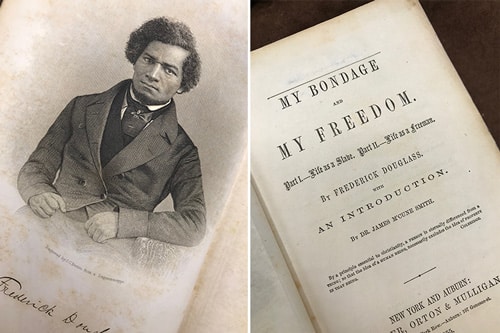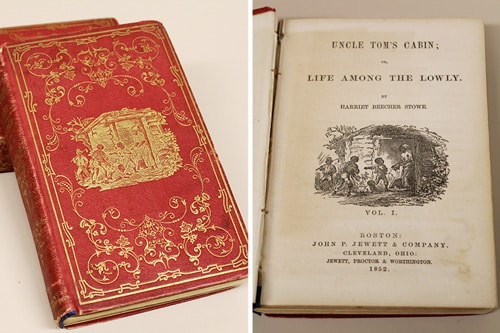TRT Blog / News
Celebrating Black History Month
To celebrate Black History Month, the Remnant Trust featured two books in our Columbia Club display area on the second floor library that literally shaped American history by hastening the end of slavery. Here we share the essence of those works with all Columbians.

Frederick Douglass Autobiography
Nathaniel Knight notices a black youth entering his bookshop. Knight supports the ending of slavery. It’s not a popular stance. Regardless, Knight is holding firm. He chats with the boy. Knight learns the youngster is thirteen years old, kept in bondage by a white enslaver in the Baltimore area. The boy tells Knight that he is teaching himself to read. Excited, Knight reaches for a book and hands it to him: “Buy it now,” he says. The boy gives some coins to Knight. Then he leaves the bookshop with a copy of ‘The Columbian Orator’ and returns to the enslaver’s home. Almost a quarter-century later, in 1855, Frederick Douglass wrote and published ‘My Bondage And My Freedom,’ which included his memory of that unforgettable day. He wrote, “With a book of this kind in my hand, my own human nature, and the facts of my experience, to help me, I was equal to a contest with the religious advocates of slavery.” Bought for fifty cents, the book meant freedom.
TITLE: Frederick Douglass Autobiography
Sitting here today, in 2023, do you recall a moment that changed your life?

Uncle Tom’s Cabin
Harriet Beecher Stowe was ahead of her time. Ahead of her time when… In 1847, visiting in Indianapolis, she stayed with her brother, a pastor at a church on “The Circle” in the heart of the city, which today is Second Presbyterian Church on North Meridian Street. That summer she became familiar with a black resident known as “Uncle Tom.” In 1848-1849, living in Cincinnati, she listened to true stories of black men and women crossing the Ohio River to find freedom. In 1850, haunted by the death of her own young son, she talked about writing a story that spoke to the trauma of enslaved black families. A year later she unfolded the novel, entitled Uncle Tom’s Cabin. The novel showed the human side of slavery, making reality out of characters and characters out of reality. Many white readers in the north faced the viciousness, cruelty, and inhumanity of black enslavement. In the final words of the novel, she implored Northerners and Southerners to share guilt in the awful tradition and share an obligation to right the wrong. Stowe’s words echoed thirteen years later in Abraham Lincoln’s Second Inaugural Address.
TITLE: Uncle Tom’s Cabin
Sitting here today, in 2023, what is true when someone is ahead of their time?

